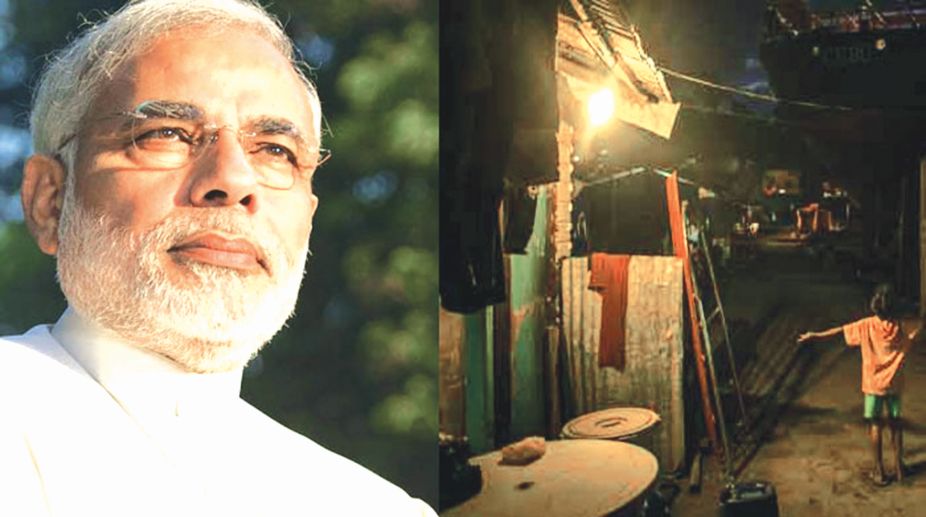India to triple installed nuclear power capacity by 2031-32: Union Minister
In a reply to a question in the Rajya Sabha, the minister said the present installed nuclear power capacity is set to increase from 8,180 MW to 22,480 MW by 2031-32.

Representational Image.
On the eve of 28 April 2018, Prime Minister Modi declared the electrification of 600,000 villages across India, hours after the last village in Manipur was officially added to the national grid. This was a monumental goal for Modi, who pledged in August 2015 to electrify all Indian villages within 1,000 days. While Prime Minister Modi and his cabinet take credit for achieving this “historic moment in the development journey of India,” as Modi tweeted, the reality is that millions still live in darkness and the government continues to provide falsified information.
The Government claims to have electrified all villages across India, but they disregard the realities of millions of Indians. The International Energy Agency, in 2015, published a Special Report regarding India’s Energy Outlook, where they estimated over 240 million Indians living without electricity.
Advertisement
The Indian Government considers a village electrified if at least 10 per cent of households and if all public buildings such as schools, health centres, community centres and village councils have access to electricity. By definition, up to 90 per cent of a village can be left in darkness, while it is still classified as an “electrified village.”
Advertisement
While the Modi Government claims to have made such a change, journalists from India Today report otherwise. India Today undertook to verify the PM’s claims, which resulted in them sending masses of reporters to Indian villages.
The information they acquired invalidates the Government’s claim of electrifying all villages across India; Dholpur (Rajasthan), Raisen (Madhya Pradesh) and Saprum (Jharkhand) are a few places that do not have access to electricity, even after the Modi Government’s claims of electrification. In fact, reporters even came across several predominantly Dalit-villages across River Narmada where some residents don’t even understand the concept of electricity.
The Government of India has been working towards making energy accessible across India. A recent report from the World Bank states that between 2010 and 2016 about 30 million Indians began to receive access to electricity each year. But the reality is that millions are still without electricity. Considering the vastness of India, how can the government provide a consistent, efficient and sustainable form of energy to 1.3 billion Indians?
One solution, we think, is through pursuing nuclear energy. Nuclear energy is economical, efficient, environment-friendly and produces no greenhouse gases. While nuclear energy requires high-costs to build infrastructure, they are inexpensive in the long-run to manage, making them a cost-effective option.
In addition to that, the nuclear power-plants have a much larger energy output in comparison to other sources of energy such as coal, natural gas and hydroelectricity. As per their capacity factor that determines their output utility, nuclear energy functions at 90 per cent whereas coal functions at 63 per cent and hydroelectricity at 44 per cent. India’s investment in nuclear power plants can initiate a transition where the Indian economy depends less on coal and increasingly on nuclear energy.
Ever since Chernobyl and Fukushima, nuclear energy has been discredited among the Indian people. However, what is not acknowledged is that the gravity of both cases was intensified as a result of human error. In the case of Fukushima, the scientists on-site contemplated whether they should use seawater to cool down the power-plants and prevent other meltdowns before doing it hours later, once meltdowns become more severe. The damage of the meltdowns could have been minimised or even prevented if the scientists injected seawater into the nuclear reactors. It took over three weeks for the Soviet Union to announce what happened in Chernobyl, resulting in many people being exposed to dangerous levels of radiation.
In efforts to reduce the threats of nuclear energy, nuclear developers have created Generation IV nuclear power plants that are economical and have enhanced safety regulations, minimal waste release and advanced efficiency output.
Considering that millions of Indians are still deprived of access to electricity, nuclear energy would pave the way to electrify all of India and also reduce India’s dependency on coal.
The writers are, respectively, a graduate of the United World College and a professor of law at Jindal Global Law School, Sonipat.
Advertisement